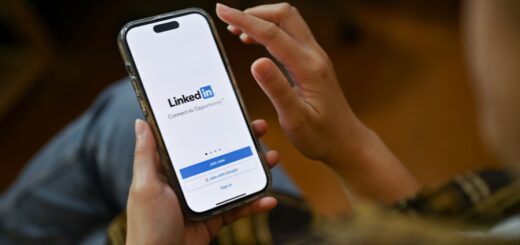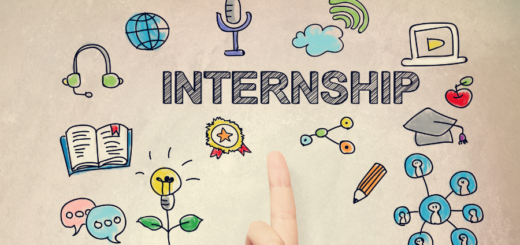Eat That Frog: A Tutorial
Oh, no. I sure don’t envy you! What, didn’t you hear? You’ve been selected (through random chance coupled with your willingness to read blog posts) to…eat a frog.
Now don’t come at me with, “Why would I ever want or need to eat a frog?!” or “Please tell me this is a metaphor for procrastination!” Nope. Sorry. A literal, green-to-the-gills (Frogs actually trade in their gills for functioning lungs when they metamorphose from tadpoles, but do you know an idiom regarding green lungs? I figured not.), swampy, slippery, slimy frog. All yours! Dig in!
Readers may not react well to this assignment. Side effects may include: an uneasy feeling in the pit of your stomach, an elevated pulse, acute nausea, cold sweats, panic attacks, and an inescapable feeling of dread. So, how can we overcome? How on earth can we accomplish this seemingly insurmountable task? Easy! Let’s take advice from someone with some experience in frog-catching, Missouri’s own Mark Twain:
“Eat a live frog first thing in the morning, and nothing worse will happen to you the rest of the day.”
First thing?! You want me to devour this adorable swamp creature first thing in the morning?! You’re out of your Missouri mind!
Maybe. But he’s right! I offer to you the following options:
Option A: You wake up and address the fact that you need to eat the frog. You send an upsetting and haphazard email to the blog author about what you think of him, his literary role models, and Missouri. The symptoms of nausea, dread, and anxiety creep over you as you make increasingly desperate attempts to ignore the frog. By the time the day is over, you’re a shell of a human being no closer to completing the assignment and heading into a sleepless night.
Have I done a good enough job selling Option A? May I present Option B?
Option B: You wake up and address the fact that you need to eat the frog. Before anything else happens, you Eat. That. Frog. It is precisely 0% fun or enjoyable, but now it’s over! You’ve loosened the knots in your stomach and emerged from (hopefully) the worst gastronomic endeavor you’ve ever attempted unscathed. The rest of your day is whatever you make of it: guiltless self-care activities to reward yourself for a job well done, culminating in a good night’s sleep after having achieved what you thought to be impossible.
I’d be hard-pressed to make a convincing case for Option A. Though Option A has considerably less frog-eating, it’s far and away the less appetizing of our choices. Why is that?
All of us face unappealing tasks, assignments, and responsibilities in every aspect of our lives. Research papers, theses, presentations, speeches, difficult emails, powerful conversations, and impactful decisions will be a constant in your life well beyond graduation. If you practice Option A too often, you run the risk of developing bad habits—not just the urge to procrastinate, but flakiness and irresponsibility, which can damage your relationships and your health.
Consider your current situation. Is there a frog staring back at you from your dinner plate? Many EFSC students have just graduated with their certificates or degrees, heralding the end of this particular leg of their academic journeys. If you’re one of those graduates, congratulations to you! Did all your responsibilities evaporate at the close of finals week, or did you just get new ones? Do you now have to consider housing, moving, job-hunting, or another sort of loud, croaking frog you’ve been trying to avoid?
Many others still have obstacles to overcome before they walk across the stage. You’ll need to come to terms with the fact that you can either practice the art—and it is an art—of tackling your most unappetizing responsibilities head-on or you can build habits that lower your prospects of efficacy and employability. So how can you become the kind of person who can identify and accomplish your goals, even those they require you to get your hands dirty? As with anything, cultivating good habits and a successful mindset requires practice.
I was never a big fan of homework assignments given over the summer break, so instead let’s call this an exercise. Exercise helps you gain strength through repeated motion and effort, and the same principles can help you gain mental fortitude and strength of will. For this exercise, I need you to find your frog. Frogs come in all shapes and sizes, and not every one of the items on your to-do list is a frog. Create a priority list of your most important “need-to-dos” (writing your research paper outline or scheduling an important appointment) down to your “should-dos” (cleaning the bathroom, taking the time to cook a healthy meal) and your “nice-to-dos” (calling home), then focus on those less-than-fun, high-priority items first thing.
As Twain said, “If it’s your job to eat a frog, it’s best to do it first thing in the morning. And if it’s your job to eat two frogs, it’s best to eat the biggest one first.”
There’s a direct correlation between the significance/grossness of a task and the feeling of satisfaction and relief that follows accomplishing that task (as well as the sense of dread that builds the longer it goes undone).
Test it yourself! Tiered list in hand, flex your willpower and eat your frog Twain-style, first thing in the morning. Record your experience, then contrast it with the usual procrastination-until-panic process. As down-and-out yucky as the frog may be, you can’t argue with the results: the task is accomplished, and you’ve saved yourself from another day of anguish. As you practice and perfect the exercise, you’ll find yourself increasingly better equipped to handle significant life changes, even the uncomfortable ones.
I also want to take a moment to give a shout-out to our office’s student worker and unofficial sounding board, Gabrielle Davis. When I first told her about writing this post and how she would react to having to eat a frog, she handled it well above my own expectations. Without me even having to explain the process, she said that instead of eating a whole frog all at once, why not process it a little bit? Can we maybe cover the flavor with some seasoning to make it more palatable? Could we take little pieces of the assignment we’ve been dreading and dilute them with treats, breaks, and rewards? Though not the answer I was expecting, I thought it was too good not to share.
Again, try it out for yourself! If you have a deadline coming up quickly, it might make more sense to just go ahead and knock it all out at once. If you have time enough to pick at the assignment like a toddler picks at their broccoli, it may help to make the whole affair that much more appetizing. Test both and record your experiences so that you can compare what worked for you.
If you’re interested in learning more about figurative frog-eating, check out Eat That Frog!: 21 Great Ways To Stop Procrastinating and Get More Done in Less Time by Brian Tracy. Educators have borrowed Tracy’s principles to inspire students and to help themselves since the book was first published in 2001. I came across them years ago during my first role as a Success Advisor for conditionally admitted students and have been encouraging my students and colleagues to explore frog-eating exercises ever since.
Whether you’re just starting your first academic program or transitioning into a new career or life situation, chances are good that you’ll face some unnerving challenges. We here at EFSC have every confidence in your ability to eat that frog and achieve the success in life that you deserve, even if you need a little salt and pepper to help it go down.
- Eat That Frog: A Tutorial - June 1, 2022
- Life Design: Your Crash Course - March 23, 2022







